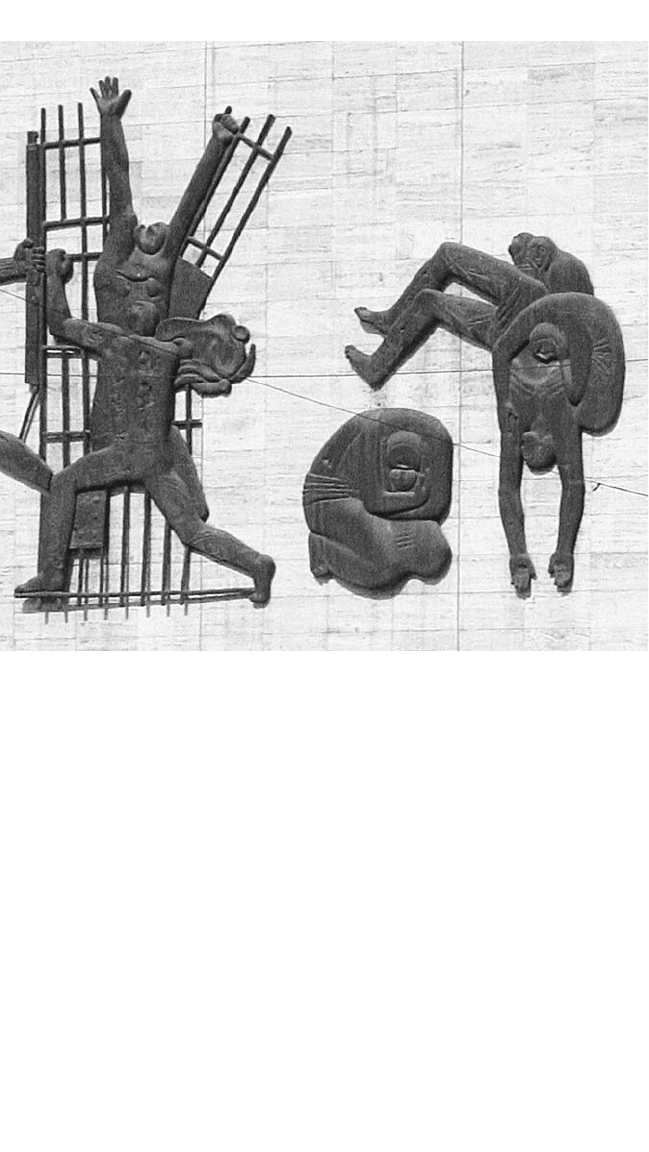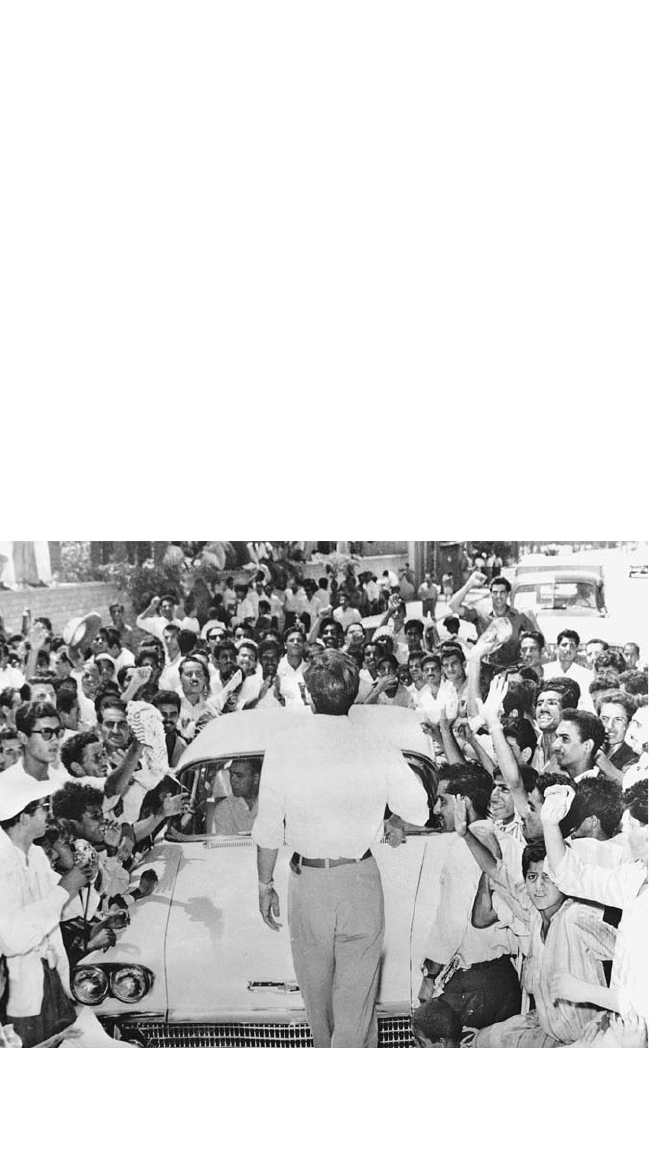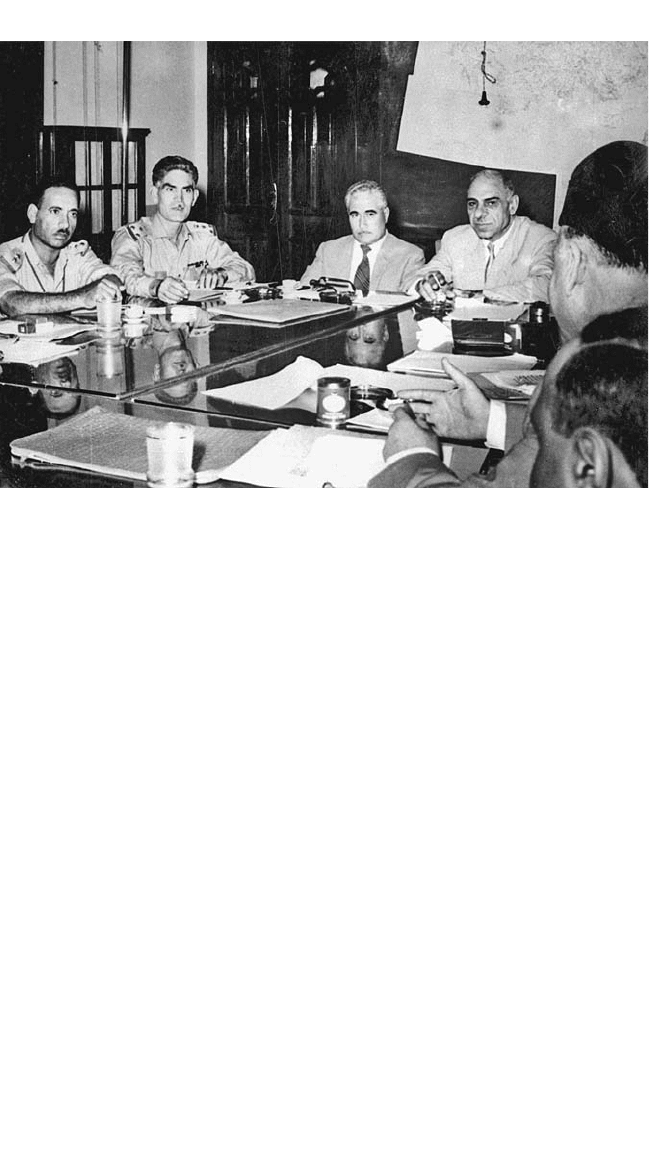Fattah H., Caso F. A Brief History Of Iraq
Подождите немного. Документ загружается.


A BRIEF HISTORY OF IRAQ
182
in the country, especially with regard to women’s issues. Thanks to the
burgeoning publication of countless autobiographies of the monarchist
era, ranging from political (and sometimes self-serving) accounts to a
genre of urban literature that can only be termed as stories of the city, we
are now in a position to substantiate the political histories with a more
nuanced view of Iraqi educational and cultural activity during the period
of the monarchy.
Education and Its Impact on Women
The development of education for Iraqis of both genders began even
before Iraq came under British rule, but because a public education was
a complete novelty for females, it affected women perhaps more than
men. By 1921, 21 schools for girls were in operation throughout the
country, with an attendance of 2,500. The Dominican Sisters opened up
a girls’ school in Baghdad with almost 1,000 students; though most of
their pupils were Christian, a number of Muslim girls began to attend
as well. In 1924, meanwhile, some schools were assigned the task of
opening a training class for women teachers, especially in Mosul and
Baghdad. In that same year, several secondary schools for boys were
opened, but girls had to wait until 1925, when the fi rst American pri-
vate high school for girls was opened, under the auspices of the church-
sponsored United Mission of Mesopotamia (Longrigg 1953, 169).
By 1950, tremendous strides had been taken in the education both
of men and women. The fact that instruction was free and primary
education was made compulsory undoubtedly accelerated the process.
Nearly a third of the 6,000 primary teachers in government schools
were women, as were a similar proportion among teachers at higher
levels (Longrigg 1953, 390). In 1950 alone, it was estimated that
200,000 children were being educated in Iraq, a statistic that went some
way toward countering the nationalist parties’ slogans that the British-
infl uenced educational system in Iraq was elitist. High school gradu-
ates could apply to enter a range of schools such as the Law School,
the Engineering College, the Royal College of Medicine, the College of
Agriculture, and several schools of arts and sciences and the fi ne arts.
Education did prepare women to meet different expectations, but for
a long time, it barely made a dent in their social emancipation. In the
early 1920s and 1930s, becoming secular in Iraq was a diffi cult proposi-
tion for girls as well as their families, especially when it meant a direct
attack on fundamental symbols of tradition, the head scarf (hijab) and
the black cloak Iraqi women wear when they step outside of the house

183
BRITISH OCCUPATION AND THE IRAQI MONARCHY
(abaya). And in the popular perception of the time, the education of
girls went hand in hand with the lifting of the veil. The struggle over
the lifting of the hijab and abaya consumed a ferocious energy, on the
part of those opposed to its withdrawal as well as on the part of oth-
ers who fought for its extinction. “The revolution over the hijab,” as
one Iraqi woman phrased it, consumed a great deal of ink and paper,
because it was mostly fought out in the embryonic Iraqi press. Among
the chief detractors of the hijab and abaya were two very famous
Iraqi poets, Jamil Sidqi al-Zahawi (1863–1936) and Maruf al-Rusafi
(1875–1945), who went head to head with the “reactionary” group of
scholars, editorialists, and newspaper columnists in the mid-1920s to
hammer out a feminist charter, calling for the eradication of the hijab
and abaya because it was “a false guardian” and imprisoned women in
fear. In any event, the social and religious custom of wearing a hijab and
abaya was discontinued over time, and by the 1940s, most Iraqi women
(in the cities, at least) went bareheaded to their schools, universities,
and offi ces.
Poetry and Free Verse
In order to understand the transformations in Iraqi culture throughout
the period of the monarchy, we must begin with poetry, that indispens-
able window onto the Iraqi soul. As early as the 1920 revolt, poetry
was used to express confl icting emotions. Using traditional form and
structure but expressing new themes, Iraqi poets unleashed a torrent
of revolutionary rhetoric that stirred their audiences to national unity.
In classical Arabic poetry the meter (wazn), which was codifi ed in the
eighth century, is based on the length of syllables. Each line (bayt, sing.;
abyat, pl.) is divided into two half-lines (shatrayn). The rhyme (qafi a) is
basically determined by the last consonant of a word, and it is the pro-
nunciation, not the writing, of the word that counts. Lebanese scholar
Philip Hitti in 1936 describes the effect on the audience as follows:
“No people in the world, perhaps, manifest such enthusiastic admira-
tion for literary expression and are so moved by the word, spoken or
written, as the Arabs. Modern audiences in Baghdad, Damascus and
Cairo can be stirred to the highest degree by the recital of poems, only
vaguely comprehended, and by the delivery of orations in the classical
tongue, though it be only partially understood. The rhythm, the rhyme,
the music, produce on them the effect of what they call ‘lawful magic’
(sihr halal).” (quoted in Chejne 1969, 5). On the one hand, one of the
most famous poets of the revolt, Muhammad Mahdi al-Basir, wrote and

A BRIEF HISTORY OF IRAQ
184
declaimed his poetry in public spaces (usually mosques), becoming
famous for poems about national sacrifi ce and the notion of al-watan
(the homeland or nation), that all-encompassing category that upheld a
higher ideal than that espoused by narrow sectarian or ethnic divisions
(Tramontini 2002–03, 175). On the other hand, the poet Sayyid Habib
al-Ubaydi al-Mosuli used poetry not only to celebrate the nation but
to promote an aggressive anti-Westernization, going so far as to accuse
the British in Iraq of being “an enemy dressed like a friend . . . [who] is
nothing but a fraudulent intruder” (Tramontini 2002–03, 178).
Leslie Tramontini believes that this two-sided articulation, or what
she calls an “us/them” dichotomy, was prevalent throughout the nation-
alistic poetry of the 1920s. One of Iraq’s greatest poets, Muhammad
Mahdi al-Jawahiri (1900–97) refl ected that duality throughout his long
life but also surpassed it to become the voice of countless generations of
Iraqis, aspiring through him to capture, in the words of Saadi Simawe,
the “holy trinity . . . [of] homeland, liberty and beauty” (Simawe 1997,
vii). Unlike many of his more revolutionary colleagues, al-Jawahiri
remained a neoclassical poet who throughout his life, infused the clas-
sical structure of Arab poetry with new themes. A prolifi c writer both
of poetry and prose (he became a journalist after a short stint as King
Faisal I’s court poet), al-Jawahiri’s works were collected in a diwan
(anthology) in 1973, covering 50 years of his poetry. In 1992, by then
an elderly man in his early 90s, al-Jawahiri electrifi ed Jordanian televi-
sion audiences with a ringing recital of a poem originally written for
the then-regent of Iraq, Abdulillah; standing ramrod tall before King
Hussein of Jordan, while wearing his trademark araqchin (white skull-
cap), al-Jawahiri recited the same poem, now in the Jordanian king’s
honor, without forgetting a single line or missing a beat.
But was Iraqi verse only about big themes of patriotism, resistance,
sacrifi ce, and rebirth? An important school of Iraqi poets thought dif-
ferently. The pathbreaking works of the poets Nazik al-Malaika (1922–
2007), Badr Shakir al-Sayyab (1926–64), and Abdul Wahhab al-Bayyati
(1926–99) still manage to attract an enormous following in the Arab
world. Al-Malaika’s fi rst poetry collection, Ashiqat al-layl (Lover of the
night) was published in 1947. Since that time, she has become one of
the most celebrated poets in the Arab world, principally because she
pioneered the writing of tafi la (free verse), a pioneering step in Arab
literature. The structure of Arab verse up to that time had been con-
strained by classical form and orientation. In addition, al-Malaika was a
brilliant critic, who not only wrote rigorous expositions of the works of
Arab authors but also translated several Western books into Arabic. Al-

185
BRITISH OCCUPATION AND THE IRAQI MONARCHY
Sayyab, the “Poet of the 1958 Revolution” who had suffered repression
during the fi nal years of the monarchy (at one point he was forced into
exile in Kuwait), was also a proponent of free verse. His 1960 book,
Rain Song, is considered one of the major works of modern Iraqi poetry.
Like al-Sayyab, al-Bayyati was forced into exile in the 1950s, returning
to Iraq after the overthrow of the monarchy in 1958. Under subsequent
governments, he alternately served as a cultural attaché, was exiled,
or was simply a traveler who liked to return home. He published 25
collections of poetry between 1950 and 1998, a good deal of it dealing
with his contentious relations with the various Iraqi governments. At
the time of his death in Damascus, he was again in exile, having been
stripped of his citizenship by the government of Saddam Hussein.
Iraqi Art
A great Iraqi sculptor, Muhammad Ghani Hikmat recalls that had it not
been for the support of the Iraqi state in the 1940s, he would never have
had the opportunity to travel to Italy to perfect his skills (conversation
with the author, Amman, July 2004). His comment and the recollec-
tions of many other talented artists from Iraq point to the systematic
support granted to artists in the royalist era. As a result of this backing,
the fi ne and plastic arts witnessed a rapid development that few Arab
countries could match. In fact, even today, Iraqi art possesses a cachet
in neighboring countries that verges on reverence.
That the Iraqi government of the day realized the innate genius of
several painters and sculptors of the period and sent them abroad to
study is only one half of the equation. The other half is that those same
artists came back to revitalize the local Iraqi scene, after which noth-
ing was the same. The fi rst and best-known artists of the period, Faiq
Hassan (1914–92) and Jawad Salim (1921–61), blazed a path that was
followed by several outstanding artists of their generation. Hassan is
remembered for his trademark paintings of wild stallions; Salim, for his
massive mural in a Baghdad square of the Iraqi people unchained.
After World War II, Hassan and Salim formed a group called la Societé
Primitive, infl uenced as they were by French impressionism. Later on,
the group came simply to be known as the Pioneers (al-Ruwwad).
Among its fl uctuating membership were several great painters of rural
Iraq, among them the surgeon Khalid al-Qassab (1924–2004). Artists
such as Hassan, Salim, al-Qassab, and Hikmat took inspiration from the
light, color, and texture of Iraq itself and reinterpreted the history and
culture of their native society in broad strokes and bold shades, exhibit-
ing their works all over the world.

A BRIEF HISTORY OF IRAQ
186
Conclusion
On July 14, 1958, Brigadier General Abdul-Karim Qasim overthrew
the monarchy, setting in motion a series of developments that led to
the massacre of nearly all of the members of the Hashemite royal fam-
ily. The survivors were the king’s aunt, Princess Bedia, and the regent
Abdulillah’s wife, Princess Hiyam, whose fabled escape from the palace
after the slaughter of the royal family is a story still recalled by exiled
royalists.
The revolution of 1958 brought to an end 37 years of nation-building
that had begun with the initial colonial era followed by a period of inde-
pendence constrained by both domestic and external factors. Although
the new nation-state quickly developed an internal coherence of its
own, it was never able to surmount the fatal fl aws that were tacked on
Detail of the Monument of Liberation by Jawad Salim, located in Tahrir Square in
Baghdad
(AP Photo/Hadi Mizban)

187
BRITISH OCCUPATION AND THE IRAQI MONARCHY
from the very beginning. For reasons of their own, both the British and
the nascent monarchy had chosen to rely on a minority of landowners
and ex-military offi cials to steer the ship of state, disregarding in the
process the diversity and complexity of the Iraqi experience. Although
King Faisal I had tried very hard to make of Iraq a state representative
of all its people, later governments clung to a narrower vision of what
it meant to be an Iraqi. A unitary state was not a foregone conclusion,
but it became so after politicians and military offi cers jettisoned the
trappings of the liberal constitutionalist order they had once subscribed
to. The issues of Arab nationalism, Iraqi nationalism, and the ques-
tion of Palestine also added their weight to the legitimacy of the Iraqi
state. Meanwhile, the glaring discrepancies and downright injustices in
social, economic, and political conditions paved the way for a revolu-
tion of massive proportions so that when it fi nally came, it destroyed a
weak, well-meaning state order that had already been hijacked by reac-
tionary elements among the army and the propertied classes.

188
8
THE GROWTH OF THE
REPUBLICAN REGIMES
AND THE EMERGENCE OF
BAATHIST IRAQ (1958–1979)
A
fter the revolution of 1958 toppled the monarchy, Iraq went
through several years of instability, as the early republican regimes
struggled to maintain their hold on the country’s fractious population.
Abdul-Karim Qasim’s government was itself overthrown in 1962, and
the political ideology that he had espoused—Iraqi nationalism—made
way for pan-Arabism, the movement inspired by Egyptian president
Gamal Abdel Nasser. Eventually, an offshoot of Arab nationalism—
Baathism—became the dominant party ideology of its day. This chapter
will discuss the tumultuous years of 1958–79, the social, political, and
economic developments that marked those years; and the sociopolitical
groundwork laid for the eventual rise to power of the Baathist regime
of Saddam Hussein.
The First Republican Regime (1958–1963)
When Brigadier General Abdul-Karim Qasim (1914–63) took power in
1958, his regime attempted to show that there was a fount of goodwill
for the new government. While the royalists seethed at the massacre
of the Hashemite family and Britain and Jordan made threatening
noises about invading Iraq, a substantial majority of Iraqis came out
in the streets in the fi rst few days of the revolution to voice hopes that
Qasim’s coup augured better times. According to political historian
Charles Tripp, much of this public enthusiasm was stage-managed
by the Communists and other national parties in Iraq (Tripp 2000,
149–150). Still, to the poor peasant and the city intellectual, no less

189
the Kurdish laborer and the small Shii trader, Qasim’s coup d’état could
not have come at a better moment. Burdened by disproportionate taxes,
oppressed by absentee landlords, and chafi ng under discriminatory
policies against ethnic and sectarian groups, many Iraqi individuals
and communities hoped that the revolutionary fervor of the disparate
factions in power would lift them out of their misery and provide them
with a better life.
Qasim’s revolutionary government, which included representation
by all of the major political blocs except the Communists, promised a
national agenda in which feudal relations in the countryside would be
dismantled; country-wide programs tackling poverty, health, and lit-
eracy would be promoted; ethnic and sectarian divisions abolished; and
economic development, reenergized. Furthermore, a three-man Sunni-
Shii-Kurd Sovereignty Council was to fulfi ll the ceremonial functions
of the head of state. But from the very beginning, the revolution began
to devour its children: The latent split between Iraqi nationalists and
pan-Arabists became real; the jostling between parties relying on mass
A celebratory crowd in Baghdad days after the overthrow of the monarchy by a coup led by
Brigadier General Abdul-Karim Qasim
(AP Photo/hg)
THE GROWTH OF THE REPUBLICAN REGIMES AND THE EMERGENCE OF BAATHIST IRAQ

A BRIEF HISTORY OF IRAQ
190
membership and the other more traditional political factions came out
in the open; and Iraq’s fragile economy could not withstand the radical
reorientations imposed on its agricultural, commercial, or industrial
bases.
Iraqi Nationalism Versus Arab Nationalism
From the very fi rst, unresolved ideas of identity and political allegiance
roiled the revolutionary leadership. Qasim, in the beginning a man
of little ideological conviction (Batatu 1978, 808–809), soon became
a believer in Iraqi nationalism. Meanwhile, the number-two man in
the revolutionary government, Colonel Abdul-Salam Aref (1921–66),
worshipped the Arab nationalist leader of Egypt, Nasser, and wanted at
once to unite Iraq with the United Arab Republic, the union between
Syria and Egypt that had been formed on February 1, 1958, under
the leadership of Nasser and the Arab Socialist Baath Party. One of
the founding members of the Arab Socialist Baath Party, Michel Afl aq
(1910–89), arrived in Baghdad soon after the coup. With his message
of Arab unity, he fanned the fl ames even further. While initially lend-
ing support to the idea of Arab unity, Qasim eventually fell back on
his particularist ideology, Iraqi nationalism. Supported by the greatest
populist movement in the country, the Iraqi Communist Party (ICP),
he began a campaign to unseat the main proponent of the pan-Arab
campaign in Iraq, Colonel Abdul-Salam Aref. Aref was the face of the
Iraqi Free Offi cers, the group of military leaders of which Qasim was
initially a member and without whose support there would have been
no coup. The Free Offi cers looked toward Egypt for their ideology
as well as their name. (President Nasser had been one of the original
Free Offi cers, along with Anwar al-Sadat, that initiated the coup that
overthrew the king of Egypt, Farouq.) That ideology was pan-Arabism
(sometimes identifi ed as Nasserism), but in 1958 pan-Arabism for Iraq
would have amounted to domination by Egypt, and to a lesser extent by
Syria, in the United Arab Republic, as its most junior member.
The Iraqi nationalists’ alarm at the rapidly changing turn of events
owed to several reasons. Samira Haj has argued that the economic base
for many of the ministers and infl uential power brokers in Qasim’s
regime lay in commercial and industrial interests (Haj 1997, 112–117).
For the most part, they represented the interests of national capital,
which would have been swamped by competition with Syrian and
especially Egyptian industries, the latter having undergone a period of
expansion after the Egyptian revolution of 1952. Moreover, the Iraqi

191
Communist Party, which could easily manipulate the Iraqi “street”
into demonstrating against any government of the moment if the latter
pursued objectives inimical to the ICP’s interests, was against union
because it also feared that the more “progressive” Iraqi bourgeoisie
would be subsumed within that of Egypt’s. Finally, it is important to
remember that Arab nationalism sat uneasily with Iraqi Kurds, and its
pan-Sunni component displeased some, if not all the Shiis.
Aref’s removal soon became expedient, if not necessary, to Qasim’s
survival. A month and a half after the July revolution, Aref was dis-
missed from his position in the cabinet and sent abroad to act as Iraqi
ambassador to the German Federal Republic. At the same time, Arab
nationalists in the government and in the ministries and departments
were sacked, with Iraqi nationalists taking their place. When Aref made
a surprise return to Baghdad in October 1958, he was immediately
arrested and “charged with plotting against Iraq and the life of Qasim,
its leader” (Haj 1997, 118). He was convicted of treason and originally
sentenced to death but later pardoned—a decision that Qasim would
regret.
The fi rst session of Iraq’s republican cabinet on July 22, 1958. From left: Colonel Abdul-Salam
Aref, deputy prime minister; Brigadier General Abdul-Karim Qasim, prime minister; and
General Naguib el-Robey, chairman of the Sovereignty Council; the others are unidentifi ed
(AP Photo/Bag. H.)
THE GROWTH OF THE REPUBLICAN REGIMES AND THE EMERGENCE OF BAATHIST IRAQ
